
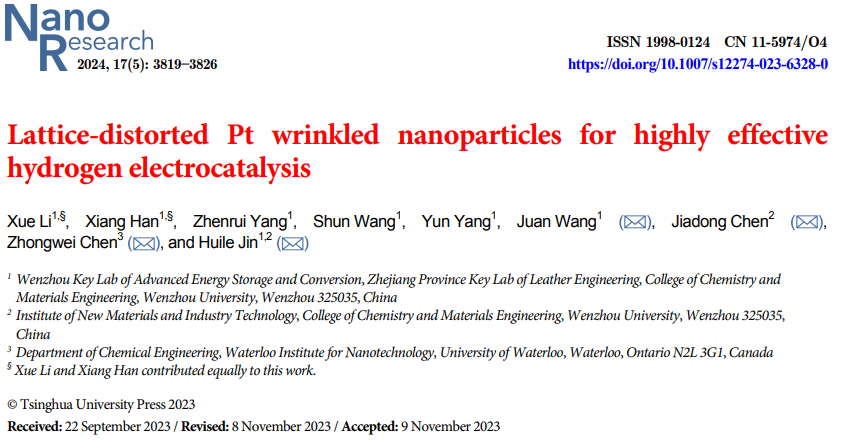
01 Research Background and Objectives
Demand for Clean Energy: With the intermittent nature of renewable energy, efficient storage and conversion of these energies has become a research hotspot. Hydrogen energy, as a clean energy source, is stored and reused through hydrogen electrocatalysis; however, in alkaline environments, the activity of platinum-based electrocatalysts significantly decreases.
Role of Lattice Defects: Lattice defects such as heteroatom doping, vacancies, and grain boundaries play a key role in various catalytic processes by maximizing the adsorption/desorption energy of reactants and intermediates.
Research Objective: This study aims to optimize the HER and HOR performance of platinum-based catalysts in alkaline environments by introducing lattice distortion.
02 Research Methods
Preparation of LD-Pt WNPs: Lattice distorted platinum wrinkle nanoparticles were prepared using specific methods.
Structural Characterization: The structure of LD-Pt WNPs was characterized using transmission electron microscopy (TEM), X-ray diffraction (XRD), and other techniques.
Performance Testing: The HER and HOR performance of LD-Pt WNPs was tested in a 0.1 M KOH solution using a conventional three-electrode system, and compared with PtSe2 WNPs and Pt/C.
Theoretical Calculations: Density functional theory (DFT) calculations were employed to explore the mechanism of how lattice distortion affects catalytic performance.

03 Research Results
Structural Features: LD-Pt WNPs exhibit a unique wrinkled structure with abundant lattice distortion.
HER Performance: The overpotential of LD-Pt WNPs at 10 mA·cm⁻² is 58.0 mV, with a Tafel slope of 52 mV·dec⁻¹, outperforming Pt/C.
HOR Performance: At an overpotential of 50 mV, the anodic current density of LD-Pt WNPs is 2.45 mA·cm⁻², which is 1.8 times that of Pt/C; the mass activity is 968.5 mA·mgPt⁻¹, about 9 times that of Pt/C.
DFT Calculations: Lattice distortion optimizes the adsorption of H and OH intermediates, lowering the energy barrier of the Volmer step, thus promoting the kinetics of HER and HOR.
04 Visual Guide
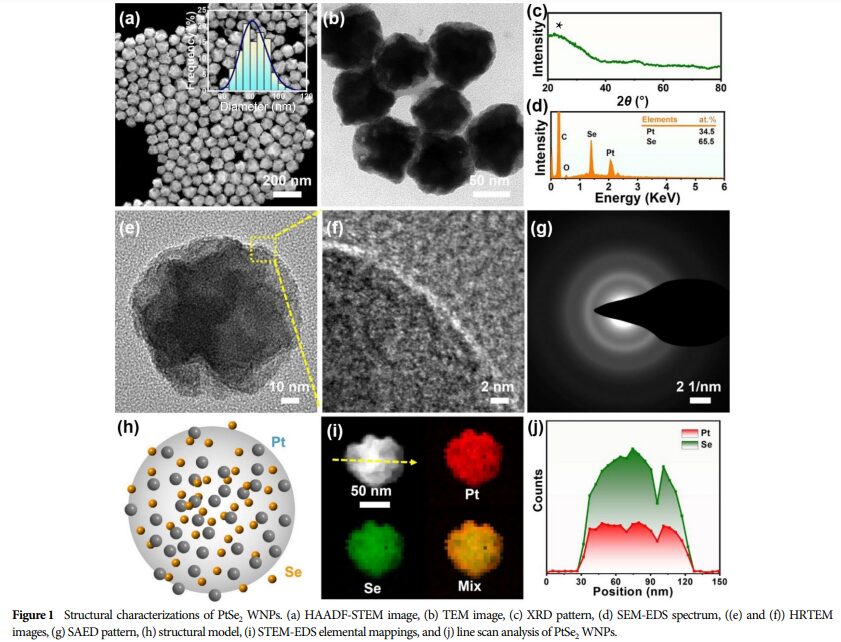
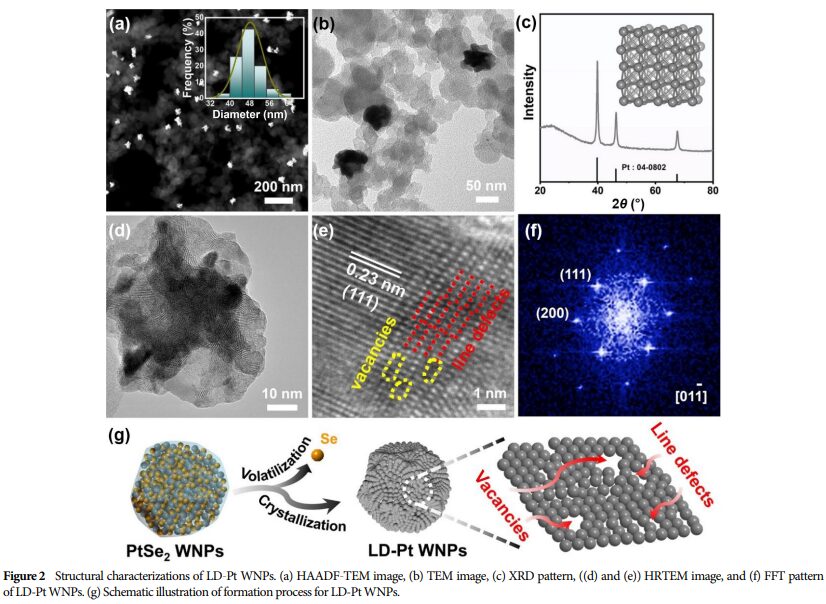
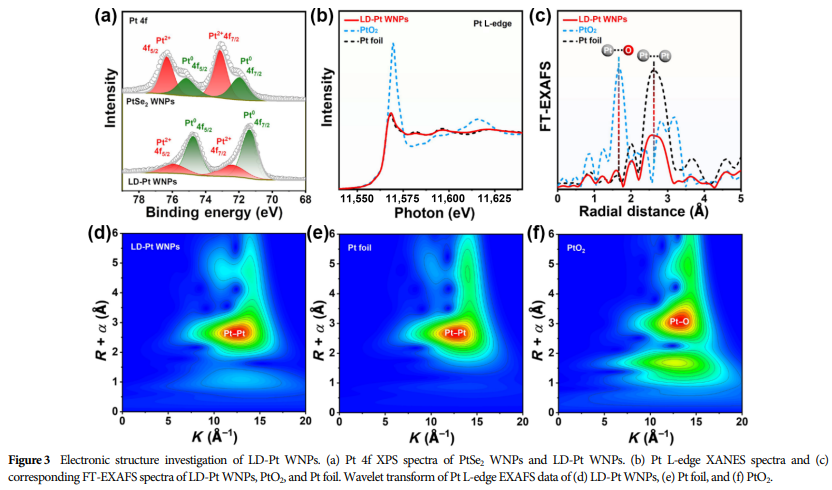

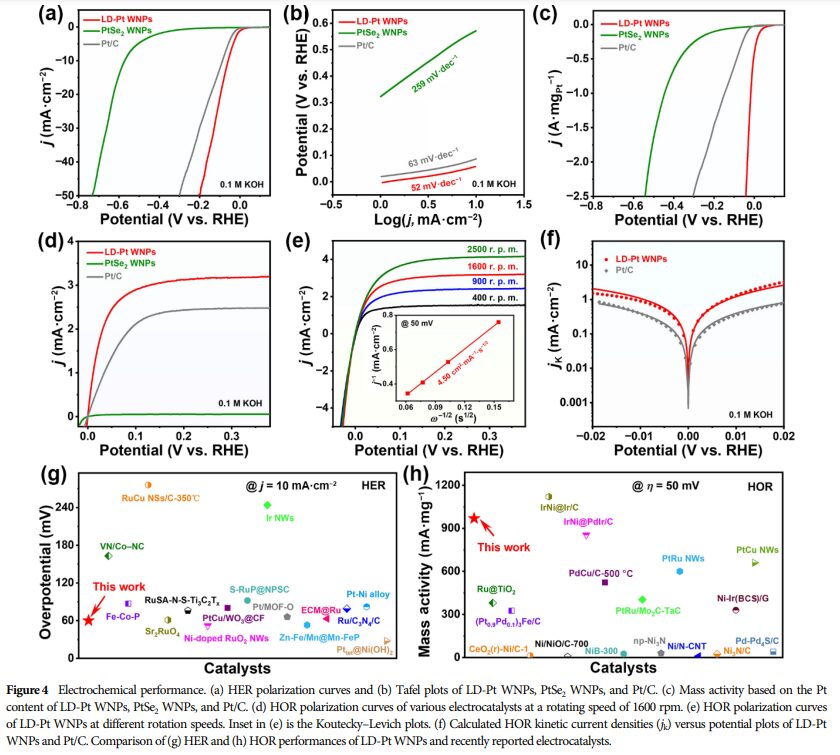
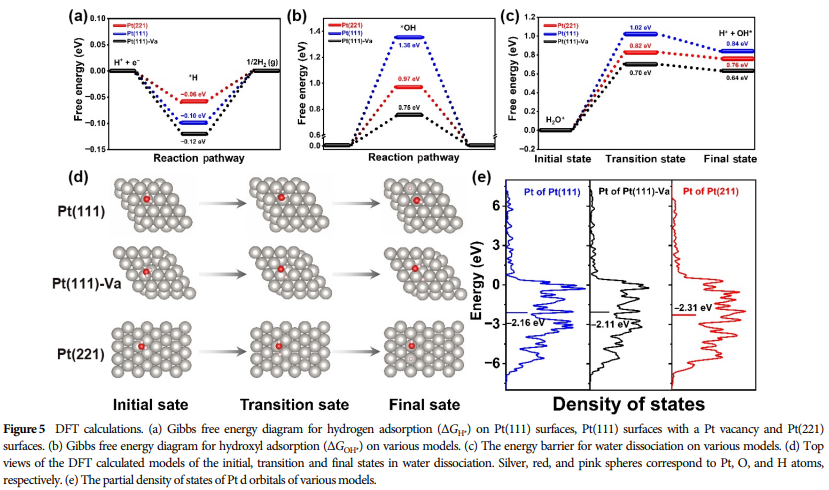
05 Research Significance
High-Performance Catalyst: LD-Pt WNPs represent a high-performance bifunctional electrocatalyst for alkaline HER/HOR with broad application prospects.
Lattice Distortion Strategy: This study provides a new strategy for the design of advanced platinum-based electrocatalysts, optimizing catalytic performance through the introduction of lattice distortion.
Research Limitations: Experimental Conditions: This study was primarily conducted under laboratory conditions, and performance in actual industrial applications may require further validation.
Catalyst Stability: Although LD-Pt WNPs demonstrate good catalytic performance, long-term stability still requires further investigation.
06 Future Research Directions
Catalyst Optimization: Further explore the impact of different degrees and types of lattice distortion in LD-Pt WNPs on catalytic performance.
Practical Application: Apply LD-Pt WNPs in actual hydrogen energy systems to evaluate their performance and stability under real operating conditions.
Theoretical Exploration: Combine more advanced theoretical and computational methods to gain deeper insights into the regulatory mechanisms of lattice distortion on catalytic performance.
In summary, this article significantly enhances the performance of hydrogen evolution and oxidation reactions in alkaline environments by preparing lattice distorted platinum wrinkle nanoparticles, providing new ideas for the design of platinum-based electrocatalysts.